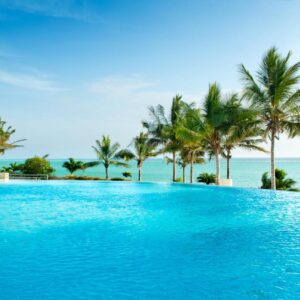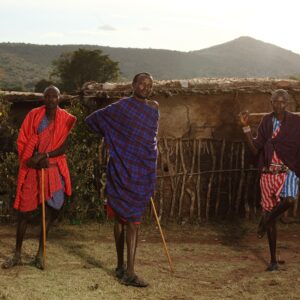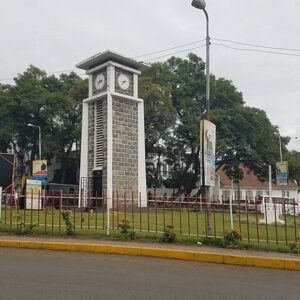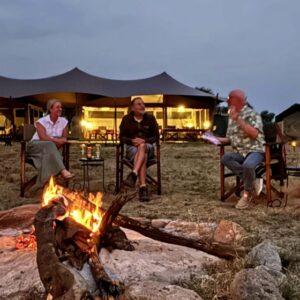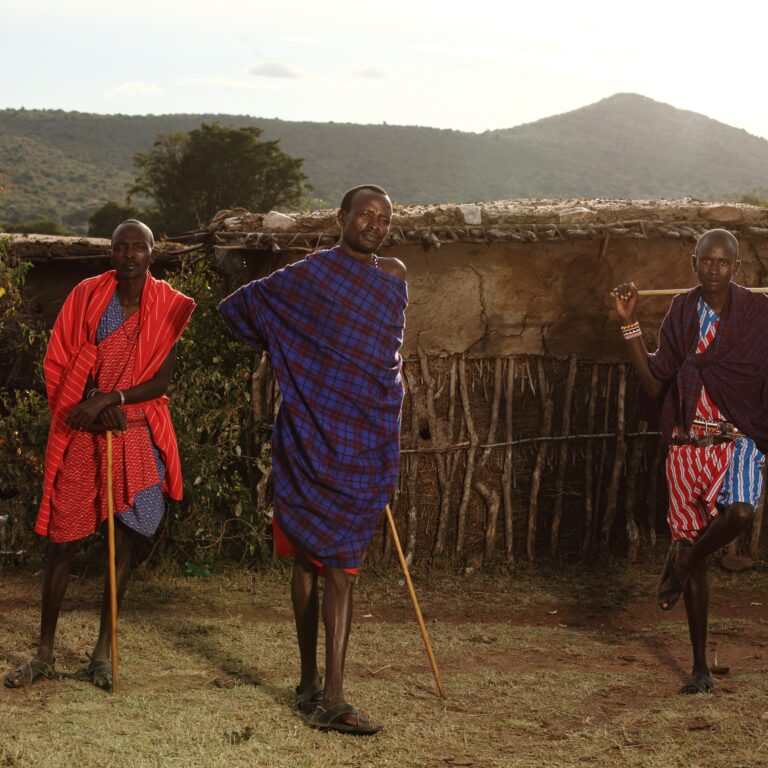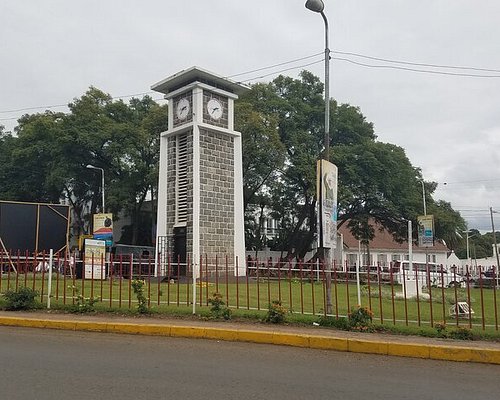The Guardians of the Plains: Fascinating Facts About the Maasai Tribe You Should Know. The image is iconic: tall, elegant figures draped in vibrant red cloth, standing proudly against the vast savanna, often alongside their beloved cattle. The Maasai, a semi-nomadic Nilotic ethnic group inhabiting parts of Kenya and Tanzania, are arguably one of Africa’s most recognizable and enduring cultures. Their deep connection to the land, their unique traditions, and their unwavering spirit have captivated the world for centuries.
More than just a tourist attraction, the Maasai are a living testament to resilience, tradition, and a profound relationship with nature. If you’ve ever embarked on a safari through the Serengeti or Maasai Mara, chances are you’ve encountered their distinctive presence. But beyond the striking visuals, there’s a rich tapestry of history, belief, and daily life that defines this remarkable people. Here are some fascinating facts about the Maasai tribe that offer a deeper insight into their compelling world.
1. Their Origins Trace Back to the Nile Valley
The Maasai are part of the Nilotic language family, indicating their origins in the Nile Valley. Oral traditions suggest that they migrated south from Sudan in the 15th century, finally arriving in what is now Kenya and Tanzania in the 17th and 18th centuries. They spread out, absorbing other communities along the way, and became known for their formidable warrior prowess, dominating vast stretches of East African plains between Mount Kenya and Mount Meru. Their arrival profoundly shaped the region’s cultural and political landscape.
2. Cattle are Central to Everything
For the Maasai, cattle are not just livestock; they are the absolute cornerstone of their existence, their culture, and their economy. Their traditional belief holds that Engai (God) gave all cattle to the Maasai, making them guardians of this sacred gift. Wealth and Status. A man’s wealth is traditionally measured by the number of cattle he owns, along with the size of his family. More cattle mean higher social standing.
Sustenance. Cattle provide milk, blood (a vital part of their traditional diet, mixed with milk), meat, and hides for clothing and shelter. Ceremonial Importance: Cattle are central to almost every Maasai ceremony, from rites of passage to weddings. Currency. Historically, cattle served as a form of currency for bartering and exchanges. This deep reliance on cattle means that the Maasai are inherently pastoralists, constantly seeking fresh grazing and water, which dictates their semi-nomadic lifestyle.
3. The Iconic Red Shuka: More Than Just Fabric
The vibrant red checkered cloth, known as the “Shuka,” worn by both Maasai men and women, is instantly recognizable. But its choice of color and style holds significant cultural meaning. Red. Symbolizes courage, strength, and unity. It’s also believed to ward off wild animals, particularly lions. Practicality. The Shuka is a versatile garment, providing warmth in the cool mornings and evenings, protection from the sun during the day, and freedom of movement. It’s durable and easily cleaned. Identity. Wearing the Shuka is a strong statement of Maasai identity and cultural pride. While some Maasai increasingly wear Western clothing, the Shuka remains a powerful symbol.
4. The Adumu (Jumping Dance) is a Test of Prowess
One of the most famous Maasai traditions is the “Adumu” or “Aigus,” often referred to as the jumping dance. Performed by young Maasai warriors (morans), this involves standing in a circle and taking turns to jump as high as possible from a standing position, keeping their bodies rigid and upright. Significance. It’s a display of strength, agility, and endurance, used to impress women and demonstrate their readiness for battle or hunting. The higher a warrior can jump, the more impressive he is considered. Choral Singing. The jumps are accompanied by rhythmic, deep-throated choral singing, often a call-and-response, which provides the rhythm and energy for the jumpers.
5. Blood is a Traditional Part of Their Diet
The traditional Maasai diet is surprisingly simple, primarily consisting of milk, meat, and blood, sometimes supplemented with honey or wild vegetables. The consumption of blood, usually drawn from the jugular vein of a cow and mixed with milk, is a key component, particularly for warriors, the sick, and during ceremonial occasions. Nutritional Value. Blood is a rich source of protein and essential nutrients, providing vital sustenance in their sometimes harsh environment. Sustainability. This practice ensures they gain nutrients without killing the animal, preserving their most valuable asset – their cattle. Modern diets for many Maasai, especially those with increased contact with towns, now include maize meal (ugali), rice, and other staples.
6. The Fearsome Moran (Warrior) Culture
The Maasai traditionally have a strong warrior culture, centered around the “Moran” (young warrior) age-set. After circumcision, young men transition into this revered age-set, living together in special camps (manyattas) away from their families. Training. During this period, they are trained in hunting, combat skills, cattle raiding (historically), and protecting their communities and livestock. They are expected to be brave, resilient, and fiercely protective.
Lion Hunting: Historically, lion hunting (often single-handedly) was a crucial rite of passage to prove bravery and skill, though this practice is now largely banned and replaced by other forms of initiation, or focused on conservation efforts to protect both lions and livestock. Role in Society. Morans are responsible for the safety and security of their communities. As they age, they transition to senior warrior and then elder roles, taking on more responsibility for decision-making.
7. Their Social Structure is Based on Age-Sets
Maasai society is highly structured around a system of age-sets, which dictate social roles, responsibilities, and rites of passage. Progression. Individuals move through different age-sets (e.g., boy, junior warrior, senior warrior, junior elder, senior elder), with specific ceremonies marking the transition from one to the next. Community Cohesion. This system fosters strong bonds within each age-set, creating a cohesive social structure that cuts across family lines and ensures community organization.
8. Traditional Homes are Built by Women
Maasai traditional homes, known as “Inkajijik” (singular “enkaji”), are unique and ingeniously adapted to their nomadic lifestyle. They are built by the women of the tribe. Materials. Constructed primarily from mud, cow dung (for insulation and waterproofing), sticks, and grass. Design. These small, loaf-shaped structures are designed to be easily dismantled and rebuilt as the community moves in search of better pastures. They offer protection from the elements and predators. Layout. Inside, they are surprisingly spacious, with distinct areas for sleeping, cooking, and housing young livestock.
9. Intricate Beadwork Carries Deep Meaning
Maasai beadwork is not just beautiful; it’s a vibrant form of artistic expression and cultural communication, with specific colors and patterns conveying deep meaning.
Colors:
Red: Bravery, strength, unity.
Blue: Sky, water, energy.
Green: Land, production, health.
White: Purity, health.
Yellow: Sun, fertility, hospitality.
Orange: Hospitality, warmth.
Black: Represents the people and the hardships they endure.
Patterns: Different patterns signify age-set, social status, marital status, and regional identity.
Craftsmanship: The intricate necklaces, bracelets, and headpieces are meticulously crafted by Maasai women and are worn by both men and women, especially during ceremonies.
10. They Have a Profound Connection to Wildlife and the Land
Despite living alongside dangerous predators, the Maasai have historically coexisted with wildlife, demonstrating a deep respect for the natural world. Shared Landscape. Their traditional lands often overlap with national parks and conservation areas, necessitating careful land management and conservation efforts. Conservation Role. Many Maasai communities are actively involved in conservation initiatives, leveraging their traditional knowledge to protect wildlife and manage land. They understand the value of healthy ecosystems. Ol Doinyo Lengai. The sacred volcano, “Mountain of God,” is central to their spiritual beliefs, emphasizing their connection to the earth.
11. Adapting to a Modernizing World
The Maasai face significant challenges in the 21st century, including land encroachment, climate change affecting grazing lands, and the pressures of modernization. However, they are also remarkably adaptable. Education. Many Maasai parents are increasingly recognizing the importance of formal education for their children, sending them to schools to gain skills for the modern world. Economic Diversification. While cattle remain central, some communities are exploring alternative livelihoods like tourism (cultural visits, guiding), honey production, and small businesses. Cultural Preservation. Despite external pressures, there’s a strong commitment to preserving their language (Maa), traditions, and values, often through community-led initiatives. They are finding ways to blend tradition with progress.
Responsible Tourism and the Maasai
When visiting Maasai communities, particularly as part of a safari, responsible tourism is paramount. Authenticity. Seek out genuine cultural experiences arranged through reputable tour operators who ensure fair benefits go directly to the community. Be wary of overly commercialized or exploitative “cultural villages.” Respect. Always ask for permission before taking photographs. Dress modestly. Be mindful of their customs and traditions.

